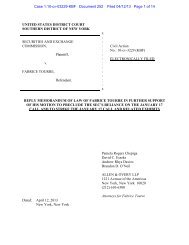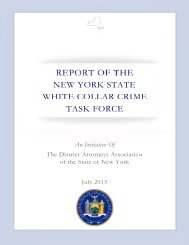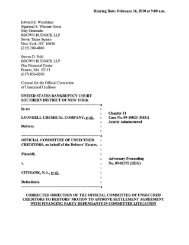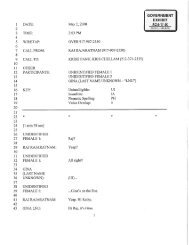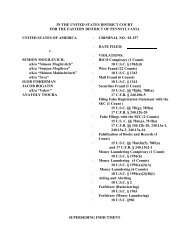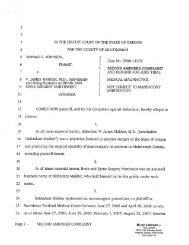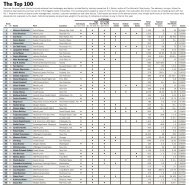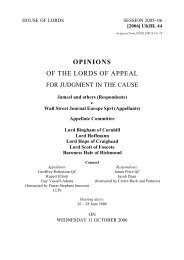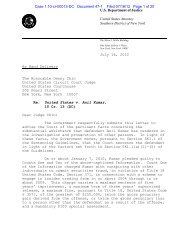Salz Review - Wall Street Journal
Salz Review - Wall Street Journal
Salz Review - Wall Street Journal
You also want an ePaper? Increase the reach of your titles
YUMPU automatically turns print PDFs into web optimized ePapers that Google loves.
<strong>Salz</strong> <strong>Review</strong><br />
An Independent <strong>Review</strong> of Barclays’ Business Practices<br />
144<br />
awarded stock until retirement; while HSBC – with only a one-year performance<br />
period – applies a five-year vesting period and a requirement to hold shares net of<br />
tax until the participant retires. 233<br />
11.54 In terms of the measures of performance, Barclays’ business level LTIPs have been<br />
based primarily on a single business performance metric: variously return on riskweighted<br />
assets (RoRWA), economic profit (EP) and return on regulatory capital<br />
(RoRC). Any other adjustments (e.g., for behaviours) were entirely discretionary.<br />
The exceptions to this (since 2011) are the RBB, Wealth and Group LTIPs. There<br />
are practical difficulties with any individual metric, however. For example, with<br />
RoRWA, the true extent of the risk involved is often not evident for a number of<br />
years. Therefore we believe it important that any long-term incentives embrace a<br />
small number of financial and non-financial measures, making adjustments for<br />
broader behaviours as well as for the risks taken by the business, including conduct,<br />
reputational and operational risks.<br />
11.55 Barclays has announced some changes to its LTIPs through the Transform<br />
Programme. We are encouraged by a number of these changes. From 2013 the<br />
relevant business reference point will be Group-wide, the bank will introduce a more<br />
balanced set of measures, and LTIPs will only be awarded to the Executive Directors<br />
and members of the Group Executive Committee. However, we remain concerned<br />
about the complexity of LTIPs; like any target based scheme they are susceptible to a<br />
focus on particular targets which may not be sufficiently aligned with the building of<br />
sustainable success. We hope that this will be taken into account by Barclays as it<br />
conducts a more fundamental review of its LTIPs during the year ahead. At a<br />
minimum, the scheme arrangements should allow the Remuneration Committee to<br />
have the discretion to adjust award if they feel that payouts are inappropriate or<br />
excessive relative to what was intended. We also note that the industry is increasingly<br />
moving away from LTIPs, towards simpler and more transparent grants of equity.<br />
Recommendation 24: Long-term awards<br />
Long-term award structures should be simple and transparent, reflect financial<br />
performance adjusted for risk, be linked to Group not individual business unit<br />
performance, and apply to a small group of the most senior executives. The<br />
Remuneration Committee should give careful consideration to ‘value at award’<br />
to ensure that it does not distort pay awards and disclosures. The Board should<br />
agree and apply principles for making adjustments for circumstances not<br />
anticipated at award.<br />
Control Function Pay<br />
11.56 The independence of the functions responsible for the risk and control environment<br />
(Risk, Compliance and Legal) is critical for the success of the business. However, for<br />
Barclays employees in these functions – especially senior people – the variable<br />
233 Only a few senior executives at Goldman Sachs receive long-term incentive awards, but all bonuses paid<br />
out to managing directors are subject to this requirement.




